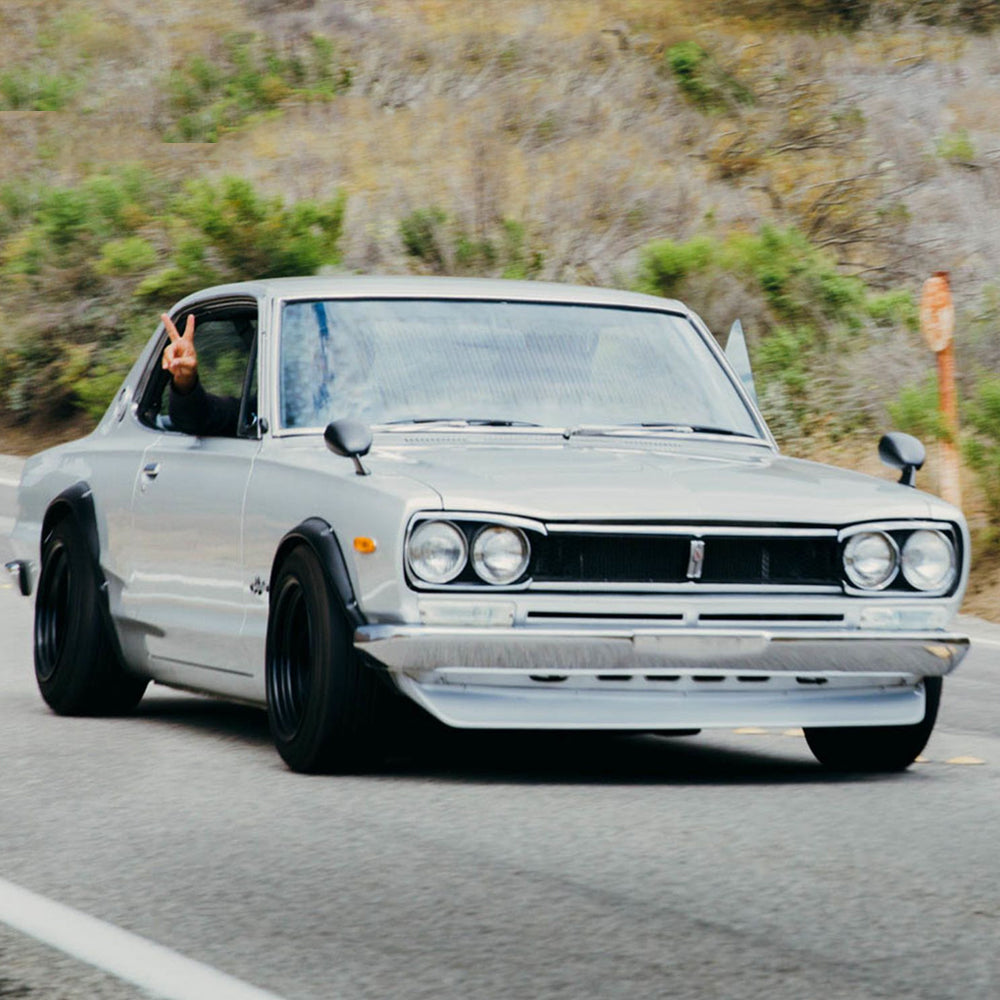Take a trip to Japan and you’ll be surprised just how many vehicles have side view mirrors mounted topside their fenders. Much like the strong influence (in some cases, borderline copyright infringement) taken from European and American automobile design, the Japanese were far from the first to utilize this obscure styling cue.
Regardless of where you stand on the matter, I think we can all agree: some vehicles pull off fender mirrors better than others. Personally, I quite like them and, although they weren’t the pioneers, the Japanese adopted the idea and mastered fender mirrors in the ’60s and ’70s in their home market. In fact, fendā mirā were standard in Japan until the regulation changed in 1983, allowing door-mounted side view mirrors. That’s not to say they’re not an option today. In fact, like the original VG30 model Toyota Century (that came standard with wing mirrors), the current GZG50 Toyota Century is still offered with optional fender mirrors.

Even today, nearly every Toyota Crown Comfort taxi on Honshu has large chrome capped wing mirrors. Now, you’re probably wondering, “I can see the appeal for styling, but why would a service vehicle like a taxi use those novel mirrors?” Well, there’s actually some sound Japanese wisdom behind their reasoning. Although the field of vision in fender mirrors is generally smaller than door mounted mirrors, they do offer some benefits—especially for Tokyo cab drivers.
Fender mirrors eliminate typical C-pillar blind spots and allow the driver to focus their eyes on the road without having to refer to door-mounted mirrors in order to see what’s going on at the flanks and rear of the car. They also protrude less from the sides of the vehicle, which comes in handy when maneuvering the narrow roads of Japan. Finally, it’s said that out of respect for their passengers, wing mirrors eliminate the extra head turning needed for door equipped side view mirrors, providing more privacy for occupants.
But enough about Japanese cabs! Some of the more popular Japanese Nostalgic Cars of relevance are the Nissan Hakosuka and Kenmeri model Skylines—both of which look fantastic with their low-slung black fender mirrors.



Another Nissan that, in my opinion is a contender for best fender mirror application, is the Japanese market Fairlady Z—also known as the Datsun 240z here in North America. With its long, gradually sloping forward hood line, the S30 Z-car’s bonnet is only further exaggerated with fender bolted bullet mirrors. The mirrors’ thin support arms are swept back giving the car an extra sporty look.
There are plenty of other Japanese classics that look great with fender mirrors, including the Honda S600 and S800, Mazda RX-7 and Cosmo, and first generation Nissan Silvia—which I’ve always thought resembles a better looking rear-wheel-drive version of the Lancia Fulvia.
Some of the earlier European contestants are the Jaguar XK120, Triumph TR3, various Rolls Royce, and even select BMW. Even some Mercedes 300SL came with either a single driver’s side or, even more rarely, two fender mirrors. We can’t forget some utility vehicles were optioned with wing mirrors including early Land Rovers!
What do you folks think? Do you like fender mirrors or are they a foreign design language that doesn’t translate to you? Do you love them? What classics look best with fender mirrors? Tell us in the comments!

Photography by Abhi Chatterjee, Andrew Schneider, Courtney Cutchen, & Otis Blank




















































